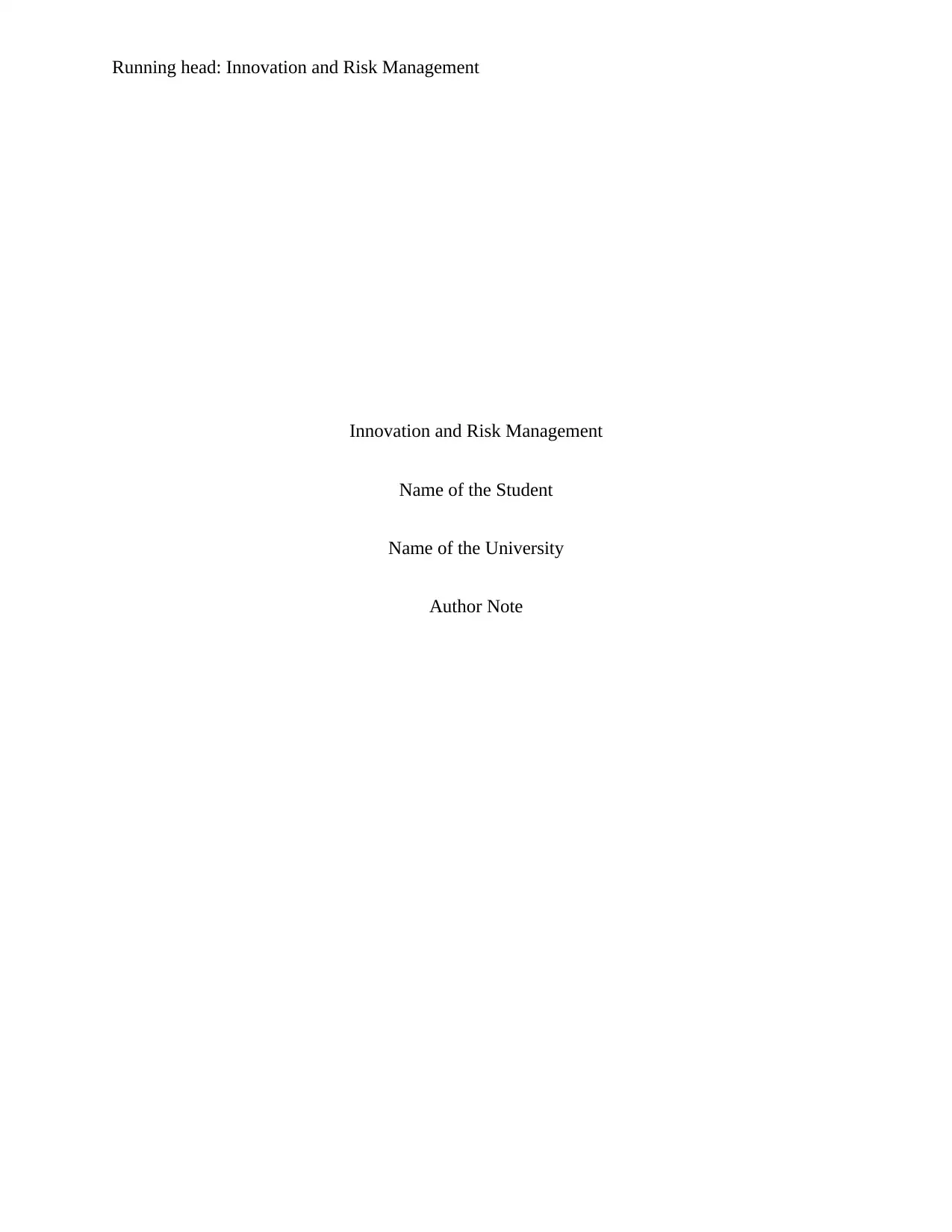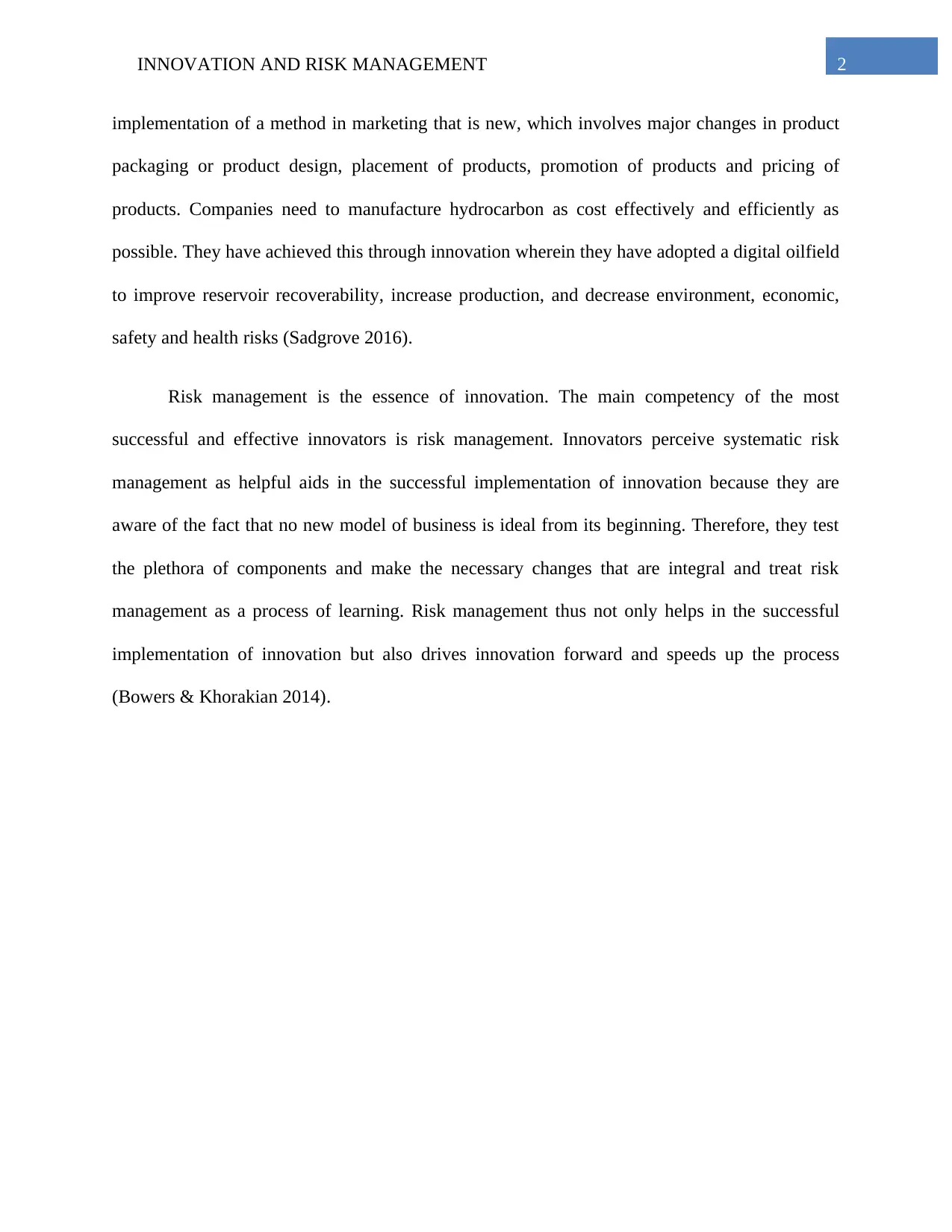Innovation and Risk Management: A Comprehensive Analysis
VerifiedAdded on 2023/04/20
|4
|712
|70
Essay
AI Summary
This essay discusses the concepts of invention and innovation, highlighting the importance of economic feasibility for an invention to be considered innovative. It explores various models of innovation, including organizational, product, process, and marketing innovation, and emphasizes the need for companies to manufacture hydrocarbons cost-effectively through digital oilfield adoption. The essay also underscores the significance of risk management in innovation, stating that successful innovators perceive systematic risk management as a helpful aid in the successful implementation of innovation because they are aware of the fact that no new model of business is ideal from its beginning and treat it as a learning process. It concludes that risk management not only helps in the successful implementation of innovation but also drives innovation forward and speeds up the process.
1 out of 4











![[object Object]](/_next/static/media/star-bottom.7253800d.svg)